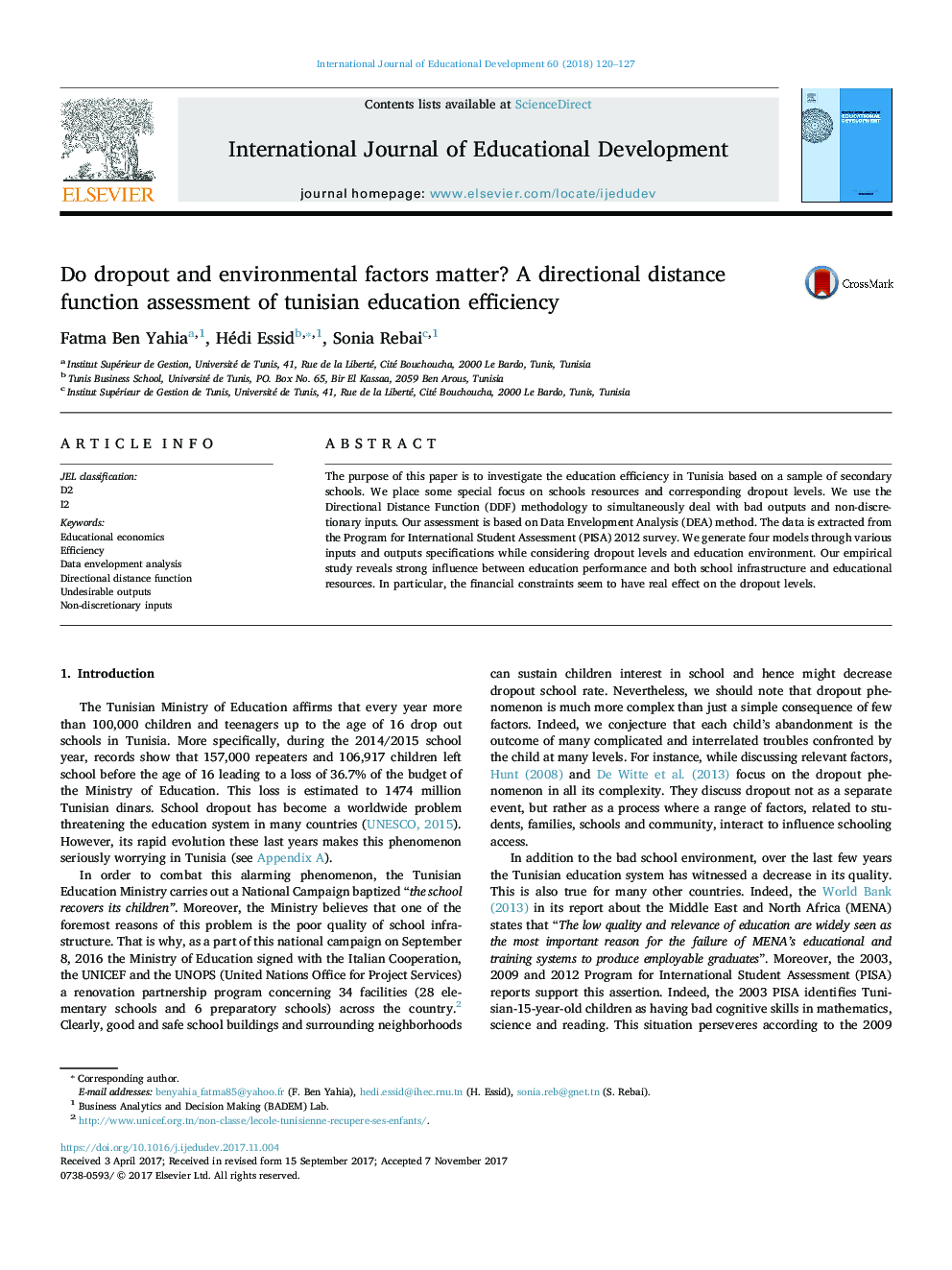| Article ID | Journal | Published Year | Pages | File Type |
|---|---|---|---|---|
| 6841126 | International Journal of Educational Development | 2018 | 8 Pages |
Abstract
The purpose of this paper is to investigate the education efficiency in Tunisia based on a sample of secondary schools. We place some special focus on schools resources and corresponding dropout levels. We use the Directional Distance Function (DDF) methodology to simultaneously deal with bad outputs and non-discretionary inputs. Our assessment is based on Data Envelopment Analysis (DEA) method. The data is extracted from the Program for International Student Assessment (PISA) 2012 survey. We generate four models through various inputs and outputs specifications while considering dropout levels and education environment. Our empirical study reveals strong influence between education performance and both school infrastructure and educational resources. In particular, the financial constraints seem to have real effect on the dropout levels.
Keywords
Related Topics
Social Sciences and Humanities
Social Sciences
Development
Authors
Fatma Ben Yahia, Hédi Essid, Sonia Rebai,
